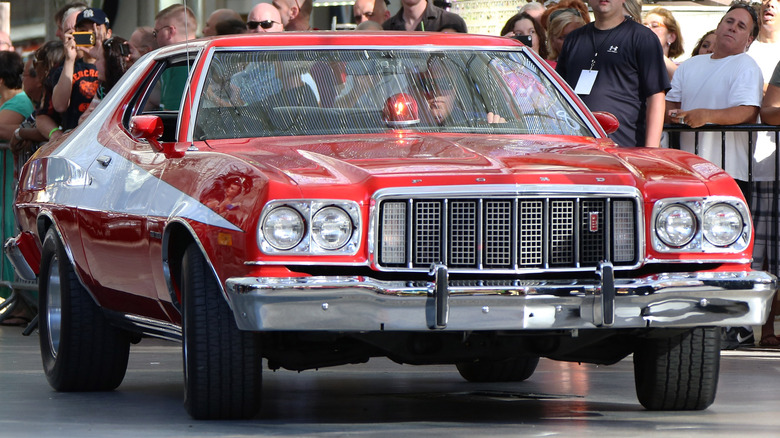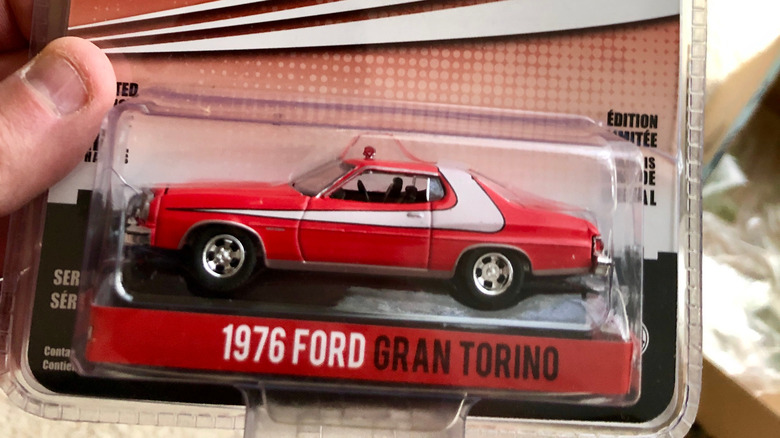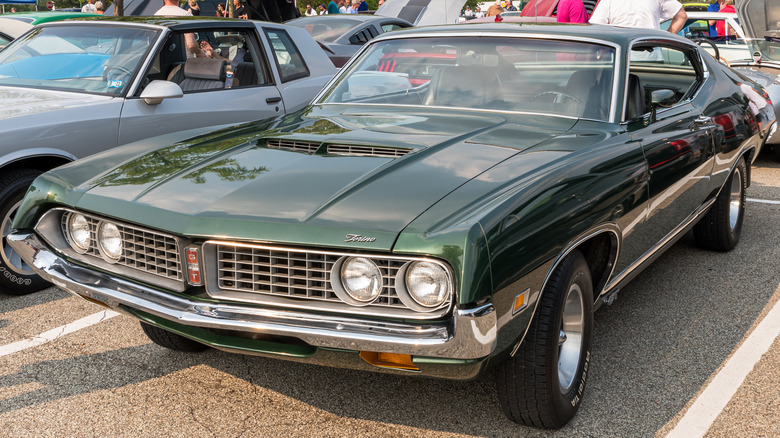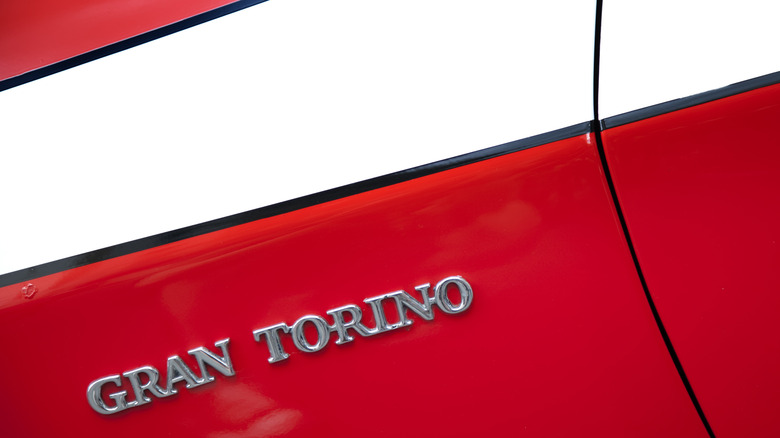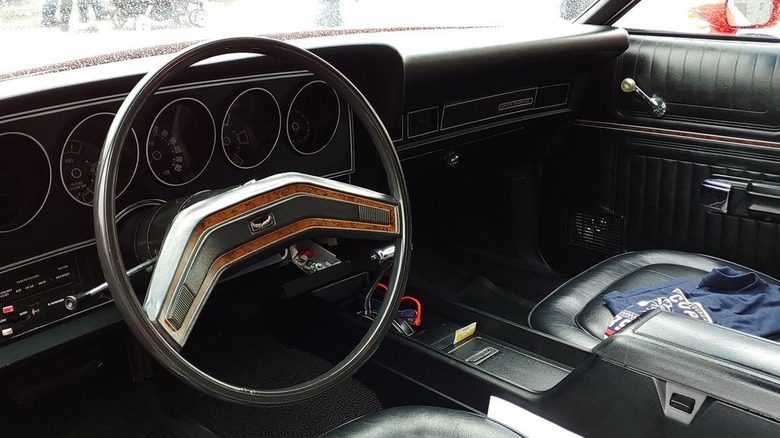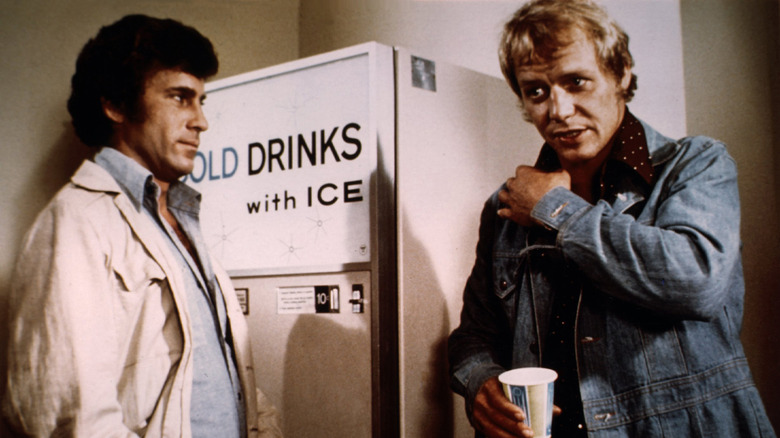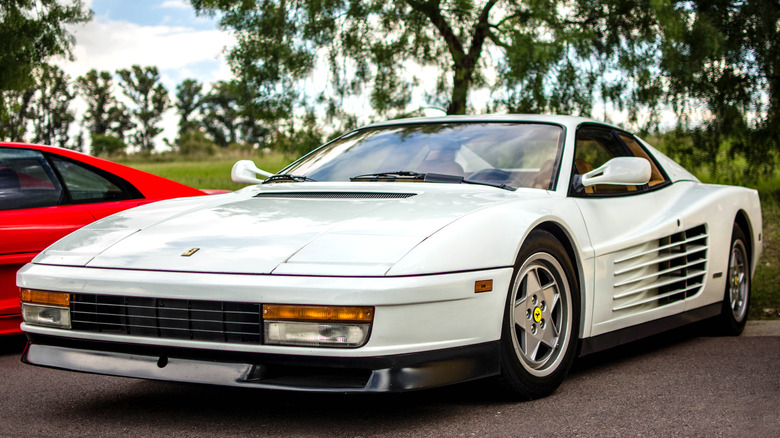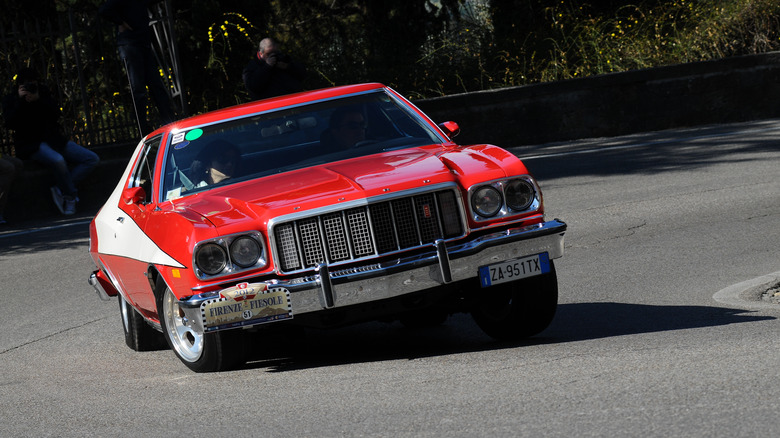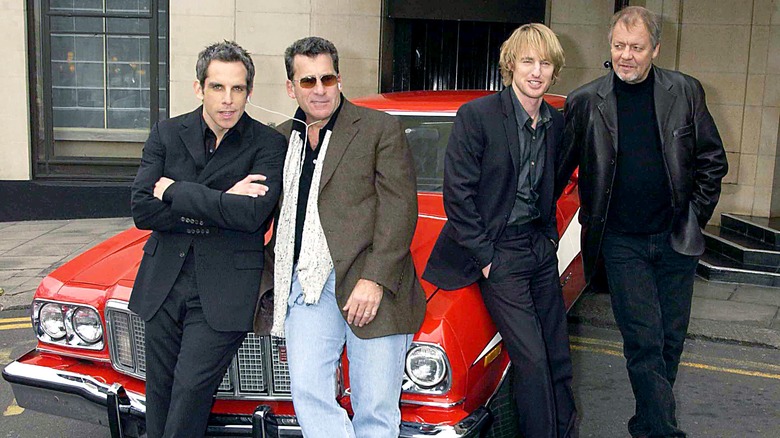Gran Torino: A Closer Look At The Famous Starsky & Hutch Car
The 1970s were a particularly fruitful time for police serials, producing such classics as "Hawaii Five-O," "Columbo," "Kojak," "Charlie's Angels," and "CHiPs," to name a few. Among these, "Starsky & Hutch" might be the ultimate buddy cop drama of its era, which presented a winning formula that paved the way for countless imitations and movies in the decades that followed.
The original TV series starring Paul Michael Glaser and David Soul as undercover detectives David Starsky and Kenneth "Hutch" Hutchinson, respectively, captured the imaginations of millions of viewers around the world. The show's great success was thanks to the two protagonists' on-screen chemistry, witty dialog, exciting action sequences, and fast-paced scripting. These were assisted by several slick supporting characters, including Antonio Fargas as the streetwise informant Huggy Bear and the duo's uber-cool, customized Ford Gran Torino cop car.
The "Starsky & Hutch" Gran Torino is one of late 20th-century television's most recognizable vehicles. As an undercover police car, the Striped Tomato – as the disapproving Hutch called it — was as preposterous as it was stylish, with its vivid red and white paint job, oversized wheels, and jacked rear suspension. Here, we take a detailed look at this iconic vehicle that was arguably as important as the titular pair in making "Starsky & Hutch" the global success that it was.
What made Starsky & Hutch special?
Throughout TV history, a detective's choice of automobile has helped define the type of person they are. For example, in "Columbo," Lieutenant Columbo's beat-up Peugeot suggests that he is a modest man with few extravagances in his life. In stark contrast, Brooklyn native Starsky is a larger-than-life personality who requires a striking and powerful car to reflect his gung-ho attitude. Once acquainted with the character, it's almost impossible to imagine him driving anything other than the Ford Gran Torino.
Starsky's police academy classmate, Hutch, is far more reserved and sensible than his partner, favoring old-school sedans to the Gran Torino, which he often claims to dislike — hence the Striped Tomato jibe. This dynamic of opposing personalities served them well throughout the series as they riffed off each other's differences despite being firm friends.
The "Starsky & Hutch" Gran Torino was the perfect device for illustrating the disparities between the show's two stars while providing essential action in the car chases that punctuate every episode. These became a recurring theme, elevating both the show itself and the car as a celebrity in its own right. Soon, the Gran Torino was helping market the series as the subject of toys and models, posters, lunch boxes, and more, turning Soul and Glaser into household names.
The history of the Ford Gran Torino
The Gran Torino had a storied history, even before becoming the legendary "Starsky & Hutch" car. Its origins lay in the Ford Fairlane pony car, a mid-size, two-door, V8 sedan that evolved into the Ford Torino in 1968, followed by the Torino GT. These later iterations bore the Torino name after the Italian city of Turin, as it was known for its automotive manufacturing, similar to Detroit, where Ford was based.
By 1970, the Torino had been given an overhaul as people demanded even bigger and more powerful cars, and by 1972, the muscle car era was in full swing. This was the year that we first saw the Gran Torino variant that became the chosen wheels for the "Starsky & Hutch" crimefighting duo. However, those expecting the new generation to be far superior to its predecessor may have been disappointed.
The new Ford was forced to undergo considerable cost-cutting measures in production, including an inferior frame-on-chassis configuration, compared to the previous iteration's monocoque construction still prevalent in today's cars. Poor design was coupled with manufacturing concerns arising from an indifferent workforce with a tough union and multiple social issues. The Gran Torino's poor performance and handling echoed this questionable build quality, and Paul Michael Glaser reportedly disliked how it drove.
Selection and customization
Why select the Gran Torino as the quintessentially cool muscle car for "Starsky & Hutch"? It wasn't the original choice, as the show's creator, William Blinn, originally envisaged the pair driving a green Chevrolet Camaro similar to one that he owned and cherished. Unfortunately for him, the production team made an agreement with the Ford Motor Company Studio-TV loan program to provide the car for the show, and they decided upon the more affordable stock Gran Torinos instead.
Aesthetically speaking, the car was perfect for the role. The 2-door coupe featured a long, wide hood, spearheaded by a large chrome grille, with chrome headlamp surrounds, window sills, exhaust, and fenders. Its rear suspension was boosted by air shocks and oversized Ansen Sprint five-slot wheels with larger tires in true muscle car form. However, the piece de resistance was its instantly recognizable custom red livery with a right-angled Wimbledon White vector stripe framing each side.
Several copies of the Gran Torino were used throughout the series, although numbers vary as to exactly how many. Some were outfitted with lower gear ratios for quicker acceleration, police radios, scanners, and magnetic sirens that would be attached during chase scenes. The distinctive engine note of the cars was dubbed in post-production and sounded like a manual transmission to the sharp-eared observer. However, aside from these few modifications, the car's specifications largely stayed true to the stock Grand Torinos that were rolling off the production line in the mid-1970s.
The Starsky & Hutch Gran Torino specifications
While they may have been slightly modified and given a makeover for their TV role, each "Starsky & Hutch" Gran Torino was basic in its specifications. Each had a four-speed automatic gearbox, disc brakes at the front, and drum brakes at the rear. Tires were reversed so as not to show loyalty to any specific brand. However, in closeups of the car's underside, Firestones were evident in some instances. All the cars used stock V8 engines found in 1974 to 1976 Gran Torino models, but their engine capacities increased throughout the series.
For example, in 1975, the two original pilot cars were outfitted with 351 cubic-inch Windsor powerplants that produced 150 horsepower. These were upgraded to 400 cubic-inch engines for Season 1 that produced 160 horsepower. Then, for the 1976 season, the cars were upgraded once again to a 460 cubic-inch Lima engine that produced 226 horsepower.
Performance figures vary greatly between various versions of the "Starsky & Hutch" Gran Torino due to their different engine capacities. Those early models with the 351 cubic inch engines were sluggish, even by contemporary standards, with a 0-60 mile-per-hour time of around 13 seconds and a top speed of just 109 miles per hour. According to the show's stars, even the more powerful later variants underperformed, leading to increasing hostility between the two men and their mechanical co-star.
[Featured image by Alatrace via Wikimedia Commons | Cropped and scaled | CC BY-SA 4.0]
The Starsky & Hutch Gran Torino's reception
Paul Michael Glaser has often spoken of hating the Ford Grand Torino — as he did in plain terms during an interview with the Archive of America Television — and David Soul found it uncomfortable while filming. During chase scenes, Soul would slide around on the vinyl bench seat while Glaser would cling to the wheel for support, a problem which was compounded by the pair never wearing seatbelts. Eventually, the production team fitted bucket seats to anchor them more firmly, but these didn't help the fact that the car was unwieldy and sluggish to drive.
Glaser would even avoid opportunities to drive the Gran Torino at public appearances and later admitted to abusing the car during takes, driving it into trash cans, and mounting curbs to purposefully damage it. As a result, the car could be seen to sustain considerable damage throughout the series as mechanics fought to patch it up as best they could.
On the other hand, the public's reception was far more forgiving. The "Starsky & Hutch" Gran Torino was a huge success, becoming the series' unofficial third star and as much of an icon as the stars David Soul and Paul Michael Glaser themselves. It was used extensively for promotional purposes, and its livery was often imitated on Gran Torinos and other vehicles. Even almost 50 years on, the car is well-represented in popular culture, thanks to various conventions, retrospectives, documentaries, and a movie remake.
The Starsky & Hutch Gran Torino's role in the show
David Soul was quoted as lamenting the fact that the "Starsky & Hutch" Gran Torino was more famous than any of the show's starring characters. It was always a high point in the show as the duo jumped in the car and sped off in hot pursuit, and fans looked forward to these action scenes, where the car was made to perform all manner of stunt maneuvers.
While these scenes were set in and around the fictional Bay City, filming usually occurred in the beach community of San Pedro in Los Angeles, with the San Pedro Municipal Building serving as the police station. The Gran Torino provided the perfect vehicle for the series' stars to tackle their adversaries against a Californian backdrop that could be glamorous or rundown in equal measure.
Cars had previously played important roles in film and television, including the Ford Mustang driven by Bullitt, Batman's Batmobile, and James Bond's Aston Martin DB5. However, the Striped Tomato represented the show as a permanent and important fixture that elevated the storylines. It influenced a whole generation of vehicles in action serials in the decades that followed, including the Dodge Charger from "The Dukes of Hazzard," the Trans Am in "Knight Rider," the GMC Vandura from "The A-Team," and the iconic Ferrari Testarossa that features prominently in "Miami Vice."
What happened to the Starsky & Hutch Gran Torino?
The "Starsky & Hutch" Gran Torino was highly popular, and reissues and replicas are still sought after and are regular fixtures at conventions and classic car rallies at home in the United States and overseas, particularly in the U.K. Such was the appeal of the Striped Tomato that Ford produced over 1,300 special-edition factory models so that the show's fans could own their iconic car, and they sold well. These were so true to the original that one of them even made it onto the show to be used as a backup car.
The limited edition factory "Starsky & Hutch" Gran Torinos lacked the modifications that were added to the production cars. Still, they were otherwise faithful copies, right down to the exact same paint tones, which were brought out of retirement for these cars only. The original reissues are very much in demand today, and many have been further modified to represent the originals and are used at fan conventions and other events.
When "Starsky & Hutch" wrapped, the principal cars on set were named Torino #1 and Torino #2, which were bruised and battered after several years of being driven to their limits. The Torinos were eventually sold at auction by the Ford Studio-TV car lease program, and each has passed through the hands of several owners since. The two primary cars are immediately distinguishable because #1 has a bench seat and #2 has bucket seats. Each has since been subject to careful restoration to return them to their 1970s condition, with #2 making an appearance in the 2004 "Starsky & Hutch" film.
The Striped Tomato's legacy
The "Starsky & Hutch" Gran Torino has become a screen legend as the original TV muscle car and was a prominent feature in the film starring Ben Stiller and Owen Wilson as the title characters. This film's existence is a testament to the lasting impression the TV series had on the public despite only running for four seasons.
"Starsky & Hutch" enjoyed a strong reception at the box office and was often shown in syndication. Then, just four years later, in 2008, Clint Eastwood directed, produced, and starred in "Gran Torino." In the movie, Eastwood portrays a surly veteran whose difficult relationship with his Vietnamese neighbors improves due to a shared love of his car. This further cemented the iconic vehicle in the public consciousness for the new millennium, and thanks to the two movies, the Ford Gran Torino will have won many younger admirers.
The original "Starsky & Hutch" made a cameo appearance in the 2004 movie, and while David Soul sadly passed away in early January 2024, Paul Michael Glaser and Antonio Fargas are still active in the movie and television industries. The Striped Tomato remains an iconic car, and versions of the "Starsky & Hutch" Gran Torinos are common fixtures on convention circuits and at car shows. There is also a vibrant collectors market, fuelled by fans who all play their part in keeping the Striped Tomato's legacy alive.
